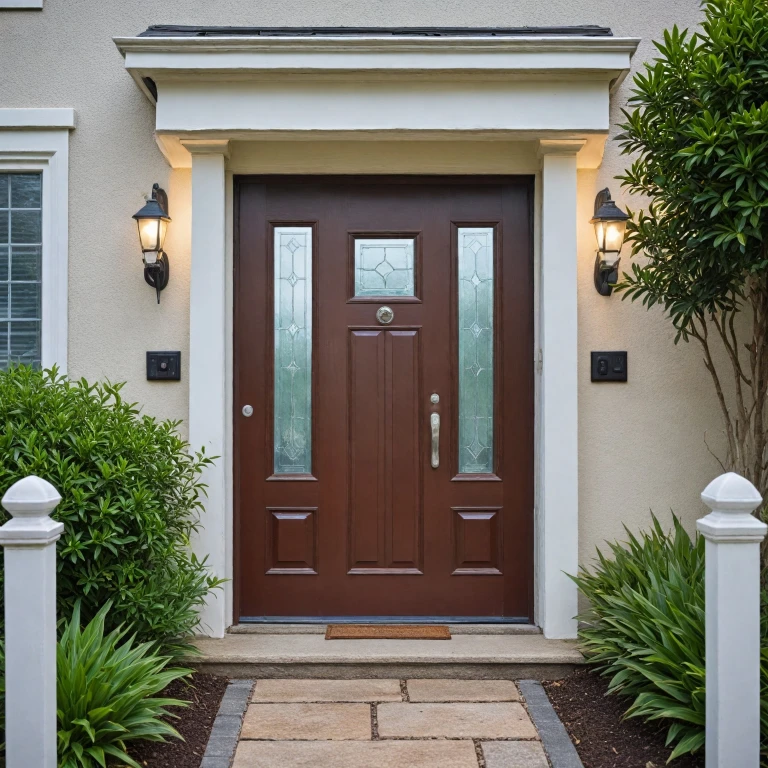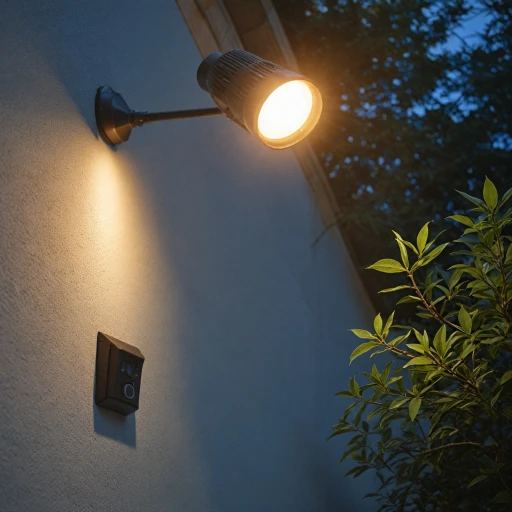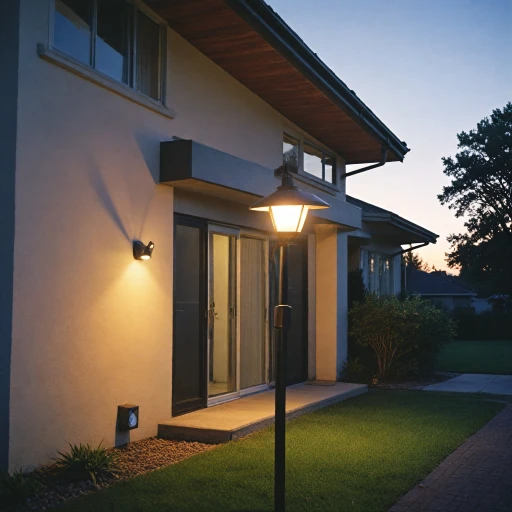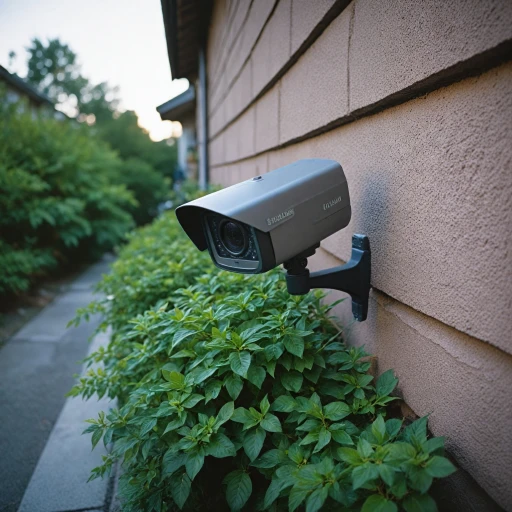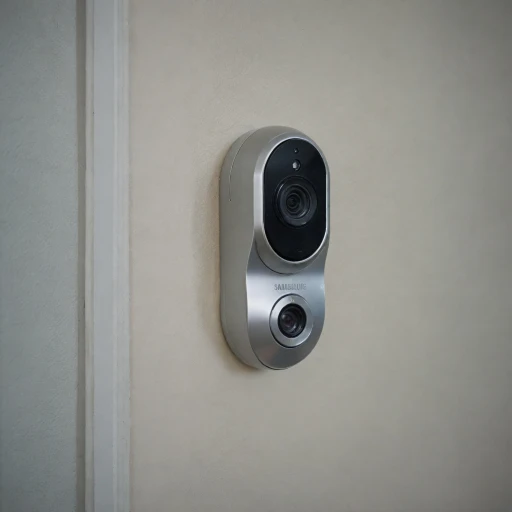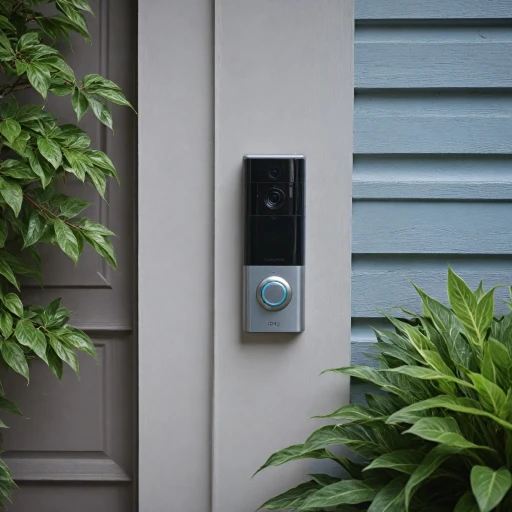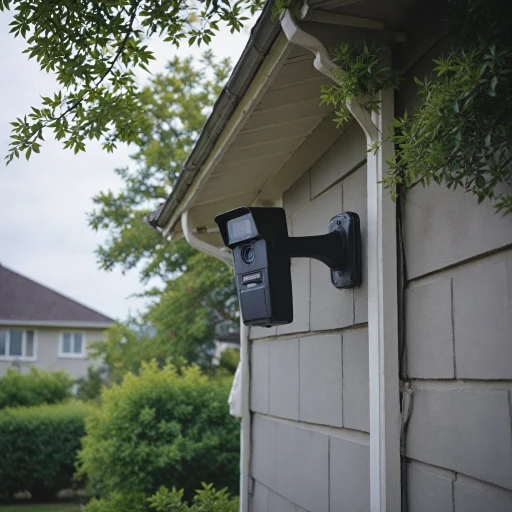
Understanding Wireless Video Doorbells
Unveiling the World of Wireless Video Doorbells
Wireless video doorbells are modern security devices that offer homeowners the convenience of monitoring and interacting with their front door from anywhere. Unlike their wired counterparts, these devices do not require intricate wiring and are easier to install, making them highly popular among tech-savvy consumers and those who prefer a straightforward setup.
At its core, a wireless video doorbell includes a camera that provides a clear view of the entry area. This camera connects to your home Wi-Fi and streams live video to a smartphone or a tablet. Most modern wireless doorbells come equipped with a motion detection feature that alerts you whenever someone approaches your door, adding an extra layer of security. Battery-powered options are available, providing flexibility for homes without existing wiring. This type of doorbell often requires a subscription service for cloud storage to archive recordings. Ring, a significant player in this field, offers various models like the Ring Battery and Ring Pro, each with its own set of features and price points associated with their distinct capabilities.
Integration with smart home systems is a key feature of these devices. Many wireless video doorbells are compatible with top smart platforms like Amazon Alexa and Google Assistant, allowing for voice control and automation. For instance, through Alexa, you can quickly check who is at the door without looking at your phone. The best models also provide night vision for visibility in low-light conditions, as well as bird's eye view angles that offer comprehensive head-to-toe coverage.
Understanding the function and advantages of wireless video doorbells is crucial for homeowners seeking a blend of security and smart home convenience. As the technology continues to evolve, these devices are not just about answering the doorbell ring; they represent a technological leap towards smarter home security solutions.
Advantages of Going Wireless
Why Wireless Video Doorbells Are a Game-Changer
Wireless video doorbells are quickly becoming a staple in smart home technology, thanks to their convenient features and adaptability. Unlike traditional doorbells that rely on extensive wiring, these battery-powered devices offer a seamless blend of functionality and ease. Let’s delve into why going wireless might be the best choice for your home. Wireless doorbells provide unparalleled flexibility in terms of placement, allowing homeowners to install them in optimal locations for the best field of view. This makes them particularly advantageous for homes where wiring is either impractical or impossible. Many models feature long-lasting batteries, reducing the need for constant recharging, and enhancing convenience.Features That Set Wireless Video Doorbells Apart
These smart devices often come equipped with motion detection, night vision, and even voice commands via Alexa or Google Assistant. Motion detection ensures that you are alerted to any activity at your door, providing an extra layer of security. Moreover, with night vision capabilities, homeowners can rest assured that they have a clear view of their porch even in low-light conditions. Integration with smart home ecosystems like Amazon Alexa enables quick replies and easy control of your device. Now, you can seamlessly check on visitors or deliveries with just a voice command.Cost-Effectiveness and Subscription Models
When considering the price of a wireless video doorbell, it's essential to factor in potential subscription plans for features like cloud storage. Many brands offer options where owners can save footage directly to the cloud, ensuring important videos are not lost. While some may perceive these as added expenses, for many, the benefits of having readily accessible security footage outweigh the costs. Finally, significant improvements have been made in accessibility with battery backup options, ensuring that the doorbell remains functional even during power outages. This significantly boosts the reliability and continuous security of your home. For a deeper dive into their versatile features, explore this detailed guide on wireless doorbell cameras.Installation Tips and Tricks
Efficient Setup for Your Wireless Video Doorbell
Setting up your wireless video doorbell can be a straightforward process with some guidance. A seamless installation ensures you get the best experience from your device, whether it's a ring or another brand. Here are some tips to keep in mind:
- Location Selection: The placement of your video doorbell is crucial for optimal motion detection. Position the doorbell camera at an appropriate height to provide a head-to-toe view of visitors, typically at about 48 inches off the ground.
- Wi-Fi Connection: Ensure a strong Wi-Fi connection where your doorbell will be installed. Poor connectivity can affect the real-time video feed and motion alerts you receive, compromising the doorbell's performance.
- Power Source: Decide between a battery-powered or wired doorbell based on your needs. Battery doorbells offer flexibility in positioning, but remember they require periodic charging. A ring battery can typically last several months, depending on usage. Wired doorbells, on the other hand, provide continuous power without the need to recharge.
- Smart Integrations: Before installation, peer into how the doorbell integrates with smart home devices like Amazon Alexa or Google Assistant. This can enhance your experience with features like voice commands and quick replies.
- Night Vision and Motion Settings: During setup, configure the motion detection settings, including sensitivity levels. This will help minimize false alerts from passing traffic or rustling leaves. Also, ensure that night vision functionality is enabled to guarantee clear video footage even in low light.
With these considerations in mind, your wireless video doorbell can be effectively installed and ready to serve as a vigilant guard at your doorstep. Find the best placement and settings that suit your home's layout and security requirements.
Security Features to Consider
Key Security Features to Look For
When selecting a wireless video doorbell, understanding the security features is crucial to ensure your home is well-protected. Here are some essential aspects to consider:
- Motion Detection: A reliable motion detection system is vital. Look for doorbells with adjustable sensitivity settings to minimize false alerts. The best models offer advanced motion detection, allowing you to customize zones and receive precise alerts.
- Night Vision: Ensure the doorbell camera has night vision capabilities. This feature allows you to monitor your doorstep even in low-light conditions, providing clear video footage regardless of the time of day.
- Cloud Storage: Many video doorbells offer cloud storage options. This feature is essential for reviewing past footage. Consider the subscription price and storage capacity, as these can vary significantly between models.
- Two-Way Audio: This feature enables you to communicate with visitors through the doorbell. Whether you’re home or away, two-way audio allows you to interact with delivery personnel or deter potential intruders.
- Integration with Smart Home Systems: Check if the doorbell works with Alexa, Google Assistant, or other smart home systems. This integration can enhance your security setup, allowing for seamless control and automation.
- Battery vs. Wired Options: Decide between a battery-powered or wired doorbell. Battery doorbells offer flexibility in placement, while wired models may provide more consistent power and performance.
- Field of View: A wider field of view, such as a head-to-toe perspective, can offer more comprehensive coverage of your entryway. Consider models that provide a broad view to capture more activity.
- Quick Replies: Some doorbells offer pre-recorded messages, allowing you to respond to visitors even if you’re unable to speak directly. This feature can be particularly useful for managing deliveries or notifying guests of your absence.
By carefully evaluating these features, you can select a video doorbell that not only fits your budget but also enhances your home's security. As you explore different models, remember to compare their security offerings to find the best match for your needs.
Comparing Popular Models
Comparing Top Wireless Video Doorbells
When it comes to choosing the best wireless video doorbell, the market offers a variety of options, each with its own set of features and benefits. Here, we compare some popular models to help you make an informed decision.
Ring Video Doorbell Pro 2
The Ring Video Doorbell Pro 2 stands out with its impressive head-to-toe view and advanced motion detection. This wired doorbell offers high-definition video quality and integrates seamlessly with Amazon Alexa, allowing for quick replies and voice commands. While it requires a subscription for cloud storage, its enhanced security features make it a worthy investment.
Ring Battery Doorbell Plus
If you prefer a battery-powered option, the Ring Battery Doorbell Plus is an excellent choice. It offers flexibility in installation, making it ideal for those who cannot use a wired doorbell. With a long-lasting ring battery, this model provides reliable performance and includes night vision for clear video even in low-light conditions. The price is competitive, and it works with both Alexa and Google Assistant.
Google Nest Doorbell (Battery)
The Google Nest Doorbell offers a sleek design and strong integration with Google Assistant. Its standout feature is the ability to recognize familiar faces, enhancing its motion detection capabilities. Although the initial price might be higher, it offers a robust set of features without requiring a subscription for basic cloud storage.
Arlo Essential Video Doorbell
The Arlo Essential Video Doorbell provides a comprehensive view with a 180-degree field of vision. It supports both wired and battery-powered installations, offering flexibility for different setups. This model includes a built-in siren and two-way audio, enhancing its security features. The integration with Alexa and Google Assistant makes it a smart choice for tech-savvy users.
When comparing these models, consider factors such as installation preferences, integration with smart home systems, and the importance of features like night vision and cloud storage. Each model offers unique advantages, so choose the one that best aligns with your needs and budget.
Troubleshooting Common Issues
Troubleshooting Your Wireless Video Doorbell
Having a wireless video doorbell can enhance your home security significantly, but like any tech device, they can encounter issues. Here are some common problems and solutions to keep your doorbell running smoothly.
Connection Issues
One of the most frequent problems is connectivity. If your doorbell isn't connecting to your Wi-Fi, ensure that your router is within range and that the network is stable. For best results, your doorbell should be within 20 feet of your router. Check if other devices are hogging bandwidth, causing your doorbell to lag or disconnect.
Battery Life Concerns
If you're using a battery-powered doorbell, monitoring the battery life is crucial. The ring battery can drain faster if the motion detection settings are too sensitive or if the video doorbell is in a high-traffic area. Consider adjusting the motion detection settings or upgrading to a doorbell with a longer-lasting battery.
Video Quality Problems
Poor video quality can be frustrating, especially when trying to identify visitors at your door. Ensure your wireless connection is strong, and consider upgrading your internet plan if necessary. Additionally, check if your doorbell camera lens is clean and free from obstructions.
Subscription and Cloud Storage Issues
Many video doorbells offer cloud storage for recorded footage, which usually requires a subscription. If you're having trouble accessing your stored videos, verify your subscription status. Sometimes, a simple app update or re-login can resolve access issues.
Compatibility with Smart Home Devices
For those integrating their doorbell with smart home systems like Alexa or Google Assistant, ensure that your devices are compatible and updated. If the doorbell isn't responding to voice commands, check the settings in the respective apps to ensure they're properly linked.
By addressing these common issues, you can ensure your wireless video doorbell operates effectively, providing you with peace of mind and enhanced security.
